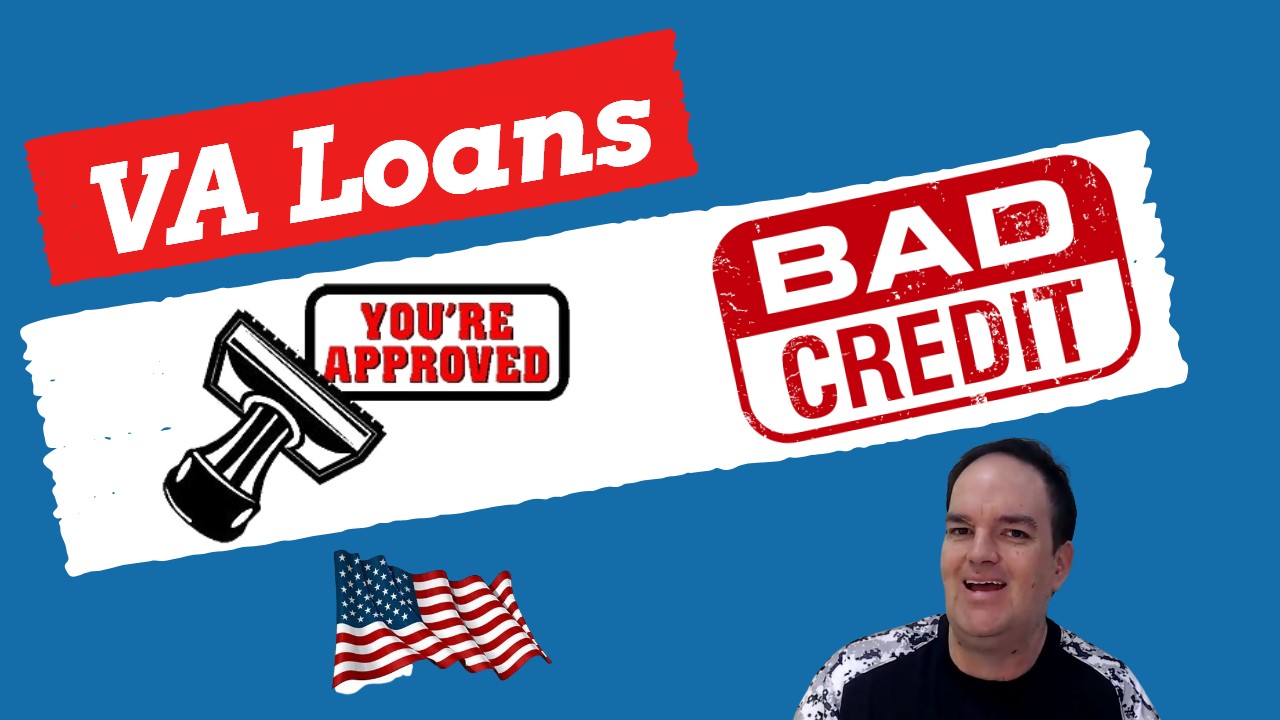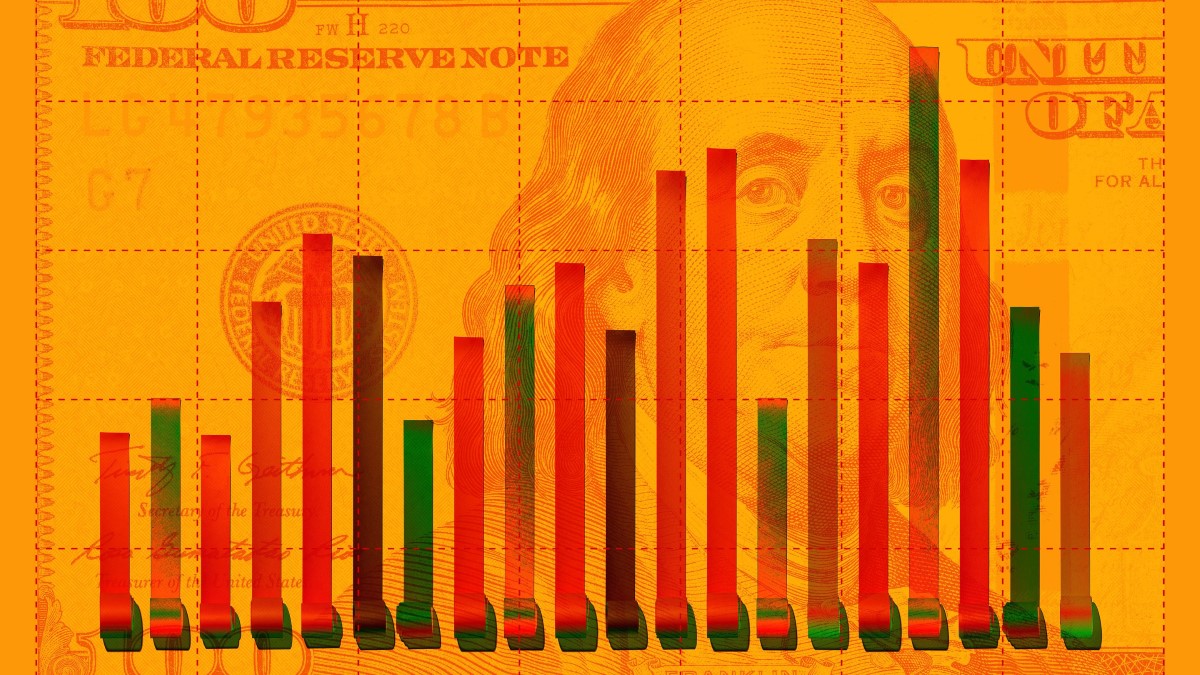

Finance
How To Get A $2500 Loan With Bad Credit
Modified: March 1, 2024
Learn how to secure a $2500 loan even with bad credit. Finance your needs with ease and without worrying about credit history limitations.
(Many of the links in this article redirect to a specific reviewed product. Your purchase of these products through affiliate links helps to generate commission for LiveWell, at no extra cost. Learn more)
Table of Contents
Introduction
In today’s world, financial gaps and emergencies can arise unexpectedly, leaving individuals in need of immediate cash. However, if you have bad credit, securing a loan can be a challenging task. Traditional lenders often hesitate to provide loans to individuals with a less-than-perfect credit score, making it difficult to address urgent financial needs.
While bad credit may limit your options, it doesn’t mean that obtaining a loan is impossible. In fact, there are alternative lenders who specialize in providing loans specifically designed for individuals with bad credit. If you find yourself in need of a $2500 loan but have bad credit, don’t despair – there are still avenues available to explore.
This article will guide you through the process of obtaining a $2500 loan with bad credit. We will discuss ways to assess your financial situation, explore loan options, research lenders, and provide tips to improve your chances of loan approval. Additionally, we will explore the importance of managing your loan responsibly, which can help improve your credit score in the long run.
While this article aims to provide helpful information, it’s crucial to remember that each individual’s financial situation is unique. It’s essential to carefully consider your own circumstances and seek professional advice if necessary before making any decisions regarding loans or finances.
Understanding Bad Credit
Before delving into the process of obtaining a $2500 loan with bad credit, it’s important to understand what bad credit means and how it can impact your borrowing options. Bad credit is typically determined by your credit score, a numerical representation of your creditworthiness based on your credit history.
A credit score is calculated by credit bureaus such as Equifax, Experian, or TransUnion, using a range of factors including your payment history, credit utilization, length of credit history, and types of credit accounts. A low credit score, usually below 620, is often considered indicative of bad credit.
Having bad credit can make it challenging to secure loans from traditional lenders such as banks or credit unions. These lenders typically prioritize borrowers with good credit scores, as they perceive them as less risky.
However, it’s important to note that bad credit doesn’t doom you to a future filled with financial difficulties. Many alternative lenders specialize in providing loans to individuals with bad credit, offering options for those in need of immediate funds.
Understanding the factors that led to your bad credit can help you improve your financial situation and increase your chances of obtaining a loan. Common reasons for bad credit include missed or late payments, high credit card balances, defaulting on loans, or having a high debt-to-income ratio.
By identifying the causes of your bad credit, you can begin taking steps to address them. This might include paying off outstanding debts, creating a budget to manage your finances, or seeking professional assistance to develop a debt repayment plan.
Furthermore, it’s important to check your credit report regularly to ensure its accuracy. Errors or inaccuracies on your report can negatively impact your credit score. By reviewing your credit report, you can spot any discrepancies and take the necessary steps to rectify them and improve your credit standing.
While bad credit can limit your borrowing options, it’s important to remain hopeful. Many lenders recognize that individuals with bad credit can experience temporary setbacks and are willing to provide a second chance. By understanding bad credit and taking proactive steps to improve your financial situation, you can increase your chances of getting a $2500 loan.
Assessing Your Financial Situation
Before applying for a $2500 loan with bad credit, it’s crucial to assess your current financial situation. This step will help you determine if borrowing this amount is feasible and if you can comfortably repay it within the specified terms.
The first aspect to consider is your income. Evaluate your monthly earnings and determine if it is sufficient to cover your existing expenses along with the loan repayment. It’s essential to have a stable and reliable source of income to ensure timely repayment without putting yourself in further financial strain.
Next, calculate your monthly expenses, including rent or mortgage payments, utilities, groceries, transportation costs, and any other recurring bills. By understanding your monthly expenses, you can assess the amount of disposable income available for loan repayment. It’s important to have a clear picture of your financial obligations to make an informed decision regarding the loan.
Additionally, consider your credit history and current credit obligations. Apart from your credit score, lenders may assess your debt-to-income ratio, which shows the proportion of your income used to service existing debts. If you already have numerous outstanding loans or high credit card balances, it may impact your ability to secure a $2500 loan. In such cases, focusing on improving your credit and addressing existing debts before applying for a loan might be advisable.
Another aspect to evaluate is your repayment capability. Review your budget and cash flow to determine if you can comfortably afford the monthly loan installments. It’s crucial to choose a loan term and repayment plan that fits within your financial means.
Lastly, consider your financial goals and priorities. While a $2500 loan may be essential to address your immediate needs, it’s important to evaluate the long-term implications. Will the loan help you achieve your financial goals or potentially hinder your progress?
By thoroughly assessing your financial situation, you can determine if obtaining a $2500 loan is the right decision for you. It’s crucial to be realistic about your financial capabilities and obligations to ensure a successful loan experience.
Exploring Loan Options
When you have bad credit and need to secure a $2500 loan, it’s important to explore different loan options specifically tailored for individuals in similar situations. While traditional lenders may be less inclined to provide loans to those with bad credit, alternative lenders and online lending platforms offer options worth considering.
One option is a personal installment loan. These loans typically have longer repayment terms and allow borrowers to make fixed monthly payments for a specified period. Alternative lenders specializing in bad credit loans may be more willing to work with individuals with a low credit score.
It’s important to compare interest rates, repayment terms, and fees when exploring loan options. High-interest rates and excessive fees can significantly affect the overall cost of the loan. Carefully read and understand the terms and conditions of each loan offer before making a decision.
Another option to consider is a secured loan. These loans require collateral, such as a vehicle or property, that the lender can seize if the borrower fails to repay the loan. Secured loans are generally easier to qualify for, even with bad credit. However, it’s crucial to weigh the risks involved, as defaulting on the loan can result in loss of the pledged collateral.
Peer-to-peer (P2P) lending is another avenue to explore. P2P platforms connect borrowers directly with individual lenders. These platforms assess a borrower’s creditworthiness based on various factors, giving individuals with bad credit a chance to secure a loan based on their overall financial profile rather than just their credit score.
Moreover, credit unions are nonprofit financial institutions that may offer more flexible loan options to their members. While credit unions typically have membership requirements, such as living in a specific area or working for a particular company, they often have lower interest rates and more favorable terms compared to traditional lenders.
When exploring loan options, be cautious of predatory lenders who take advantage of individuals with bad credit. Watch out for lenders that advertise “guaranteed approval” or require upfront payment fees. Legitimate lenders will evaluate your financial situation and creditworthiness before approving a loan.
Overall, thoroughly research and compare different loan options to find one that best suits your needs and financial situation. It’s important to choose a reputable lender that offers fair terms and is transparent about the loan terms and conditions.
Researching Lenders
When seeking a $2500 loan with bad credit, conducting thorough research on potential lenders is essential. This step will help you find reputable lenders who specialize in providing loans to individuals with less-than-perfect credit scores. By taking the time to research lenders, you can improve your chances of securing a loan with fair terms and avoiding predatory lending practices.
Start by searching for online lenders that specifically offer loans to individuals with bad credit. Look for lenders who have positive customer reviews and transparent lending practices. Reading online reviews and testimonials can provide insights into other borrowers’ experiences and help you gauge the lender’s reliability.
Verify that the lender is licensed and operates in compliance with relevant laws and regulations. Check if they are registered with the appropriate regulatory bodies, such as the Consumer Financial Protection Bureau (CFPB) or state banking departments. This information can usually be found on the lender’s website or through a quick online search.
Review the lender’s website and loan terms. Look for clear and concise information about interest rates, fees, repayment terms, and eligibility criteria. Reputable lenders will provide transparent information to help borrowers make informed decisions. Pay attention to any hidden fees, high interest rates, or unreasonable repayment terms, and be cautious of lenders who request upfront fees or payment.
Check if the lender offers flexible repayment options. Some lenders offer the ability to customize repayment plans based on your financial situation, allowing you to choose a repayment term and schedule that fits your needs. This flexibility can help you better manage your loan repayment and reduce the risk of default.
It’s also important to ensure the lender has a secure website and takes appropriate measures to protect your personal and financial information. Look for security indicators such as SSL certificates and secure payment gateways. Protecting your sensitive information is crucial when applying for loans online.
Consider reaching out to the lender’s customer service team. A responsive and helpful customer service department is a good indication of a reputable lender. Contact them with any questions or concerns you may have and gauge their professionalism and willingness to assist you.
Lastly, consider the lender’s overall reputation within the lending industry. Look for established lenders with a track record of providing loans to individuals with bad credit. Check if they are members of reputable industry organizations or associations, as this may further demonstrate their commitment to ethical lending practices.
By conducting thorough research and due diligence, you can select a lender that best suits your needs and offers fair terms. Remember to compare multiple lenders to ensure you make an informed decision and select the best loan option for your financial situation.
Applying for a $2500 Loan
Once you have researched and identified potential lenders who offer $2500 loans to individuals with bad credit, it’s time to begin the application process. Applying for a loan requires careful preparation and attention to detail to maximize your chances of approval. Here are some important steps to follow when applying for a $2500 loan:
1. Review the eligibility criteria: Before submitting your application, carefully review the lender’s eligibility requirements. Ensure that you meet their minimum age, income, and residency criteria. Some lenders may also have specific credit score thresholds, so make sure your bad credit is within their acceptable range.
2. Gather necessary documentation: Lenders typically require supporting documentation when you apply for a loan. This may include proof of identity, proof of income (e.g., pay stubs, tax returns), bank statements, and proof of address. Prepare these documents in advance to streamline the application process.
3. Complete the application form: Fill out the loan application form accurately and honestly. Provide all the required information, including your personal details, employment history, and financial information. Double-check the form for any errors or omissions before submitting it to the lender.
4. Provide additional information if requested: Depending on the lender and your specific circumstances, they may request additional information or supporting documents. Be prepared to provide any requested documentation promptly to avoid delays in the loan approval process.
5. Wait for loan approval: After submitting your application, wait for the lender to review and process it. This may take anywhere from a few minutes to a few days, depending on the lender’s processes and their workload. Be patient during this time and avoid submitting multiple applications simultaneously, as it can negatively impact your credit score.
6. Consider loan offers: If your application is approved, the lender will provide you with loan offers outlining the loan terms and conditions. Carefully review each offer, paying close attention to the interest rates, repayment terms, and any associated fees. Compare the offers to select the one that best fits your needs and financial situation.
7. Accept the loan offer and sign the agreement: Once you have chosen a loan offer, carefully read and understand the loan agreement before signing it. Ensure you are comfortable with the repayment terms and conditions outlined in the contract. If you have any questions or concerns, don’t hesitate to reach out to the lender for clarification.
8. Receive the funds: After signing the loan agreement, the lender will disburse the funds to your designated bank account. The timing of the disbursement will vary depending on the lender and the chosen loan transfer method. Once the funds are received, you can use them for your intended purpose.
Throughout the application process, it’s important to be truthful and accurate in all the information you provide. Any discrepancies or false information can result in your loan application being rejected or lead to future complications.
Remember, applying for a loan is a serious financial decision. Only borrow what you can afford to repay, and ensure that the loan terms and monthly payments fit comfortably within your budget. Responsible borrowing and diligent repayment can help improve your credit score over time.
Tips to Improve Loan Approval Chances
If you have bad credit and are seeking a $2500 loan, there are several steps you can take to improve your chances of loan approval. While these tips do not guarantee approval, they can significantly enhance your creditworthiness and make you a more attractive borrower in the eyes of lenders:
1. Review and improve your credit: Start by obtaining a copy of your credit report from all three major credit bureaus. Carefully review the report for any errors or inaccuracies and dispute them if necessary. Paying off outstanding debts and making consistent on-time payments can also help improve your credit score over time.
2. Lower your debt-to-income ratio: Lenders often assess your debt-to-income ratio, which compares your monthly debt payments to your monthly income. Lowering this ratio by paying down debts can make you a more favorable candidate for a loan.
3. Shop around for the best loan terms: Don’t settle for the first loan offer you receive. Take the time to compare different lenders and loan options to find the most favorable terms and conditions. Look for lower interest rates, flexible repayment terms, and affordable monthly payments.
4. Consider a cosigner: If you have difficulty qualifying for a loan on your own, having a creditworthy cosigner can strengthen your application. A cosigner agrees to take responsibility for the loan if you default, giving lenders more confidence in lending to you.
5. Build a stable employment history: Lenders prefer borrowers with a stable income source and employment history. If you have recently changed jobs or have gaps in your employment, it may be beneficial to wait until you have a stable employment record before applying for a loan.
6. Demonstrate a strong repayment ability: Show lenders that you can responsibly manage your finances by consistently making on-time payments for your existing debts and bills. This demonstrates your ability to meet financial commitments, increasing your chances of loan approval.
7. Have a well-prepared loan application: Ensure that your loan application is complete, accurate, and supported by any necessary documentation. Incomplete or inconsistent information can raise red flags for lenders and result in a rejection. Double-check all details and provide all requested documents promptly.
8. Maintain stable residency: Stability in your residential history can also improve your loan approval chances. Lenders may view frequent moves or a short-term residence as signs of instability or a higher risk profile. If possible, maintain a stable address throughout the application process.
9. Show a strong savings record: Building a savings account demonstrates financial responsibility and can improve your chances of loan approval. Having a savings cushion can also provide a safety net in case of unexpected expenses or temporary financial setbacks.
Remember, even if you follow these tips, approval is not guaranteed. Each lender has their own approval criteria and decision-making process. Be realistic about your financial situation and only borrow what you can comfortably afford to repay.
Lastly, improving your credit and financial health takes time. Patience, persistence, and responsible financial habits can eventually help you qualify for better loan terms and improve your overall financial well-being.
Managing Your Loan Responsibly
Once you have successfully obtained a $2500 loan with bad credit, it’s crucial to manage the loan responsibly to ensure smooth repayment and to protect your financial well-being. Here are some important tips to help you manage your loan effectively:
1. Create a budget: Develop a budget that includes your loan repayment as a monthly expense. This will help you allocate funds accordingly and ensure that you have enough to cover the loan installment without neglecting other financial obligations.
2. Prioritize loan payments: Make your loan payments a priority by ensuring they are paid on time every month. Missing payments can damage your credit further and may result in additional fees or penalties from the lender.
3. Automate your loan payment: To avoid late payments, consider setting up automatic payments with your bank. This will ensure that your loan installment is deducted from your account on the specified due date. Just be sure that you have sufficient funds in your account to cover the payment.
4. Communicate with your lender: If you encounter any financial difficulties or anticipate trouble making a payment, reach out to your lender as soon as possible. They may be able to offer alternative repayment solutions or provide guidance to help you through temporary financial setbacks.
5. Avoid taking on additional debt: While managing your current loan, it’s best to avoid taking on new debt unless absolutely necessary. Taking on more debt can strain your finances further and make it challenging to meet your loan obligations. Focus on repaying your existing debt before considering new borrowing.
6. Use windfalls wisely: If you come into unexpected funds, such as a bonus or tax refund, consider allocating a portion of it toward your loan repayment. This can help you pay down your loan quicker and potentially save on interest charges over the long term.
7. Keep track of your loan balance: Regularly monitor your loan balance to ensure that it is decreasing as expected. This will allow you to track your progress and keep you motivated in your loan repayment journey.
8. Avoid unnecessary expenses: Cut back on non-essential spending to free up more funds for loan repayment. By being mindful of your spending habits and making small adjustments, you can make a significant impact on your ability to repay the loan.
9. Monitor your credit report: Regularly check your credit report to ensure that your loan payments are being reported accurately. A positive repayment history can improve your credit score over time, helping you in future loan applications.
By managing your loan responsibly, you not only ensure timely repayment but also set yourself up for better financial stability in the future. Responsible loan management can improve your creditworthiness, increase your chances of obtaining favorable loan terms, and provide opportunities for financial growth.
Conclusion
Obtaining a $2500 loan with bad credit may seem challenging, but it is not impossible. By understanding bad credit, assessing your financial situation, exploring loan options, researching lenders, and applying for a loan strategically, you can increase your chances of loan approval. Additionally, managing your loan responsibly will ensure smooth repayment and contribute to improving your creditworthiness over time.
Remember, bad credit is not a permanent barrier to accessing financial assistance. Many lenders specialize in providing loans to individuals with less-than-perfect credit scores. By researching and comparing different lenders, you can find one that offers fair terms and suits your financial needs.
Improving your credit is an ongoing process, and responsible loan management is a crucial component of that journey. By making timely repayments, prioritizing loan payments in your budget, and avoiding unnecessary debt, you can improve your financial standing and increase your chances of securing better loan opportunities in the future.
It’s important to note that while loans can provide temporary financial relief, they should be approached with caution. Only borrow what you truly need and can comfortably repay. Carefully consider the terms and conditions of the loan before signing any agreement.
Lastly, remember that your financial journey is unique. Seek professional advice if needed and adapt the strategies outlined in this article to suit your specific circumstances. By taking proactive steps to manage your finances and responsibly repay your loan, you can work toward a stronger financial future.













